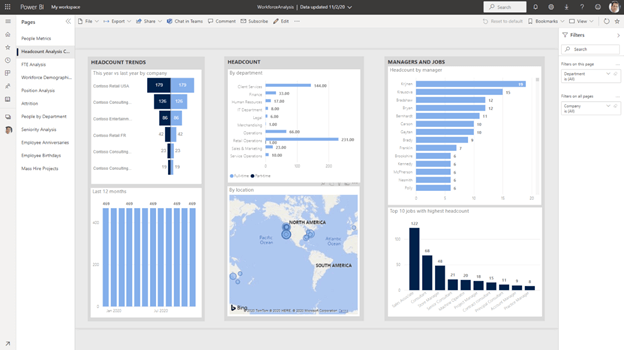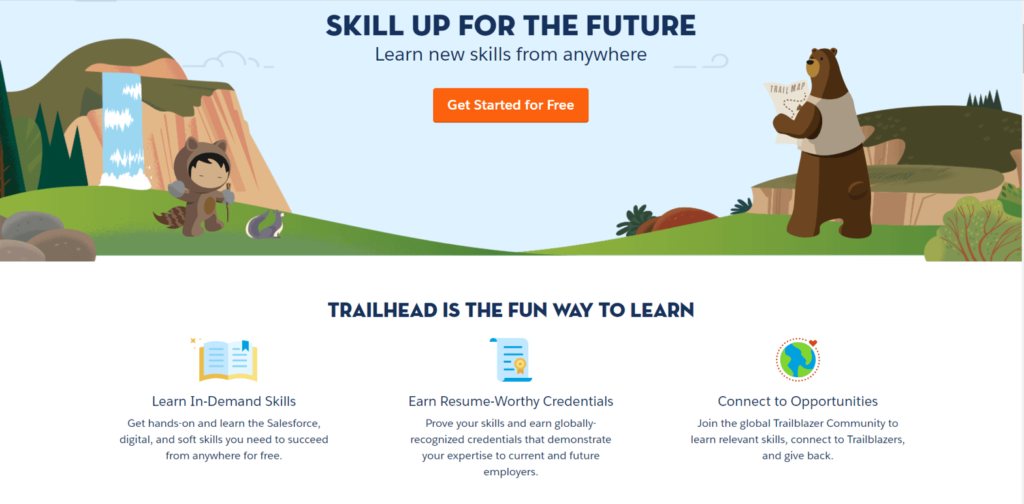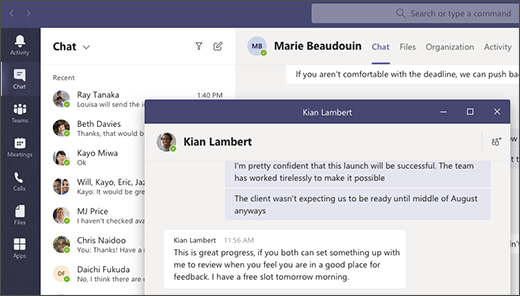The Work Trend Index survey by Microsoft done over 30,000 people globally showed 41% of global workers want to quit within 2021 and 46 percent are planning a career transition.
Millions of professionals are resigning. ‘The Great Resignation’ also known as ‘The Big Quit’ is happening globally with employee turnover spiking the charts!
In the Work Trend Index report, Microsoft CEO Satya Nadella says, “No areas have undergone more rapid transformation than the way we work.” He has emphasized the need to define productivity more broadly, inclusive of collaboration, learning and wellbeing.
Why are employees quitting?
Research says that employee burnout is one of the leading reasons for employees saying, “I quit.”
Sudden shift to remote working, unmanaged workload, lack of face-to-face interaction with colleagues, job insecurity, pay-cut, technical gaps in remote working- all caused a great deal of stress and burnout, eventually driving people to quit their jobs now more than ever.
Realisation of work autonomy and work-life balance are also other reasons for many job changes.
The Great Resignation: A pressing challenge for HR Professionals
The abrupt change in the working style invited complex challenges for both employers and employees. For HR professionals, some of the pressing challenges because of the Great Resignation have been:
- Increased employee turnover rates
- Lack of talent retention
- Costly replacements since each resignation can cost a company up to a third of the worker’s annual salary. (Work Institute, 2020)
With the new hybrid working modality, HR pros are struggling to offer personalised services to employees in areas of engagement, learning and development, one-on-one interaction, career aspirations, and motivation.
Most HR professionals globally still use outdated technologies such as spreadsheets for leave, absence, and timestamps. The never-ending paper trails decreases HR productivity, restricting them to focus on employees’ needs.
Technology To the Rescue
HR is a data-dependent department. Hence, the lack of innovative HRM software compels professionals to focus more on administrative tasks and paperwork than strategic tasks/plans for employee growth and motivation. The consequences were recognised during the pandemic when HR and employers could not retain the best talents in the company and were busy with maintaining administrative data.
HRM tools can increase organisational efficiency, accuracy, compliance, without the need to maintain paperwork, freeing up their time to focus on employee productivity and motivation. Technology empowers you with tools to analyse employee performance, interpret the collected data and bring additional employee insights to help the key decision-makers to make better decisions for the company’s sustainable growth.
How it helps?
1.Optimises HR processes
With the automation of manual tasks, HR professionals can invest their energy and focus on employee engagement strategies, effective communication, learning and development, increasing their job satisfaction, resulting in higher employee retention. Workflow and Calendar in Microsoft Dynamics 365 HR help them set priorities and reminders.
2.Gives accurate and timely results
Integrating technology gives you accurate results.
For example, Incorrect time assessment can be annoying and problematic for both HR, employees, and payroll managers. This has been a major concern of conflict among employers and employees in the pandemic when the team was working remotely. Overwork, pay cuts despite full-time work were some of the consequences of this.
Timesheet App for Job Module in Business Central is a workable solution to these problems. The tool captures the time spent on the projects and allows flexible time tracking of your employees and relieves the workload of Finance, HR, and Project Managers.
Besides saving the finance department’s time, technology automates employee payments on the exact date and time. Timely and accurate salary payment is crucial, and this technology helps your company achieve that. SiriusPayroll365-an HR integrated Payroll for Business Central is one of the tools that simplifies payroll and finance and takes care of these crucial processes.
3. Empowers team with Data-Driven insights
When you have data-driven insights, you have many benefits in hand. When every data of employee is on the same platform, you can immediately get into action. One such solution that enables you to get all data in the same place is Microsoft Dynamics 365 Human Resources. This tool allows you to use survey insights from Microsoft Dynamics 365 Customer Voice and has embedded analytics to analyse HR programs. Also, rich dashboards from Power BI help you centralise, analyse, and visualise all your human resource data from any device.

Apart from this, data-driven HR analytics powered by AI notifies you about employee performance reviews and annual appraisals.
As an HR professional, you can design a healthy workplace culture and plan the long-term growth of the workforce.
4. Designing strategies for learning and development opportunities within teams
Learning and development is an important part of talent management strategy and a major part of overall business growth. 2016 Gallup report shows that 87% of millennials believe that Learning and Development in the workplace are important, and 59% of millennials give thought to having opportunities to learn and grow to be extremely important in deciding whether to apply for a job.
Performance management for Microsoft Dynamics 365 Human Resources helps with analysing the performance management process. With the real time data, the managers can track the progress of their team members, identify their problems, and take action to work on the issue.
Team leaders and the HR team can work together to discover courses in platforms like Coursera, Edx, Linkedin Learning and recommend them to their co-workers accordingly. Besides this, if you are using the tools of Microsoft and Salesforce, you can check out platforms including Microsoft Community, TrailHead of Salesforce to learn their comprehensive features.

How technology supports your employees while ensuring productivity?
1. Facilitates Real-time communication
Technology solves most of your communication problems by keeping your team connected.
Market-leading tools such as Microsoft Teams, Salesforce HR, Microsoft Dynamics 365 HR are widely used for real-time communication and collaboration within departments. These tools are AI-powered, integrated, and all-in-one solutions to make employee management convenient.

For instance: With File storage and Sharepoint integration, you can access and store a range of documents within the Microsoft Team. Through Outlook and Teams calendar features, you can schedule meetings with agendas and take notes if necessary.
The channels in Microsoft Teams allow you to collaborate on documents, host meetings up to 10,000 users and have conversations.
2. Makes your team self-reliant
Self-service empowers your employees by making them self-reliant. They do not need to request HR for easily resolvable updates, which makes them feel independent.
The self-service tool also supports the work-life balance of the employees. For example: when the workers’ data is available to the manager, they can know if the team member has met the key performance indicator in a particular month. This helps them to arrange a vacation time for the employee which contributes to boosting the mental motivation of the employee.
Self-service features in HR Tools such as Microsoft Dynamics 365 HR allow the employees to handle their profile updates, training, performance tracking, goal setting, time-off requests, view time-off balance, enable managers with the right tools, help employees grow with training and certification tracking.
3. No need for micromanagement
Micromanagement can be discouraging which can lead many workers to resign for peace of mind. According to Harvard Business Review, many managers are finding remote management difficult and making their subordinates’ lives more stressful.
Be it in work from home or work at office, instead of human intervention, let technology record your progress and the hours spent on tasks.
One such solution is ‘Timesheet app’ which makes sure productivity is on track without micromanaging your employees.
4. Keeps your team connected in hybrid work model
Last year’s abrupt arrangement to remote work brought a change in basic assumptions in the working culture. Employees not only hope to get a hybrid working option, but they expect it. According to a report by Robert Half Talent Solutions, 89 percent of UK businesses expect hybrid work trends to become permanent following a 190 percent increase in remote work job postings since the beginning of the Covid.
Technologies make the transition to hybrid work smooth and effective. It plays a significant role in helping HR and employees sustain themselves together and make the blended work successful.
Hybrid work can reduce resignation rates by supporting the mental well-being of workers. Nonetheless, as many of us are new to this model, organisations have challenges in leading this system. The essential part, however, is empathy combined with innovative technology.
According to the Work Trend Index report, office space should no longer stop at the office and the leaders must consider how to equip all workers with tools while working from anywhere. “Physical office space must be compelling enough to entice workers to commute and include a mix of collaboration and focus areas. Meeting room and team culture should be evolved, and the voices should be heard,” the report writes.
Quitting job is a big decision and can bring consequences when one is not equipped with stable financial options. And given the situation, when the pandemic is still far from over, there are many facets to measure before deciding to quit.
Rather, business leaders must leverage technology to redefine productivity in a workplace and instead of resigning, the employees can ‘make an ask’ for flexibility or recrafting work schedule to line up with what they are looking for long term.
What’s Next?
What are your experiences with retaining employees and how are you planning to address the resignation challenge in your organization? Let us know your thoughts.
Technology works wonders to make the business process efficient. However, matching the right tools as per the company’s needs and helping your employees adopt technology is necessary when implementing it.
Dogma Group has been helping companies in their digital transformation journey. As your trusted advisor, we assure you that you get the best solution to your problems and make sure that technology is embraced by your team.
Contact us today for a no-obligation consultation on 01296 328 689.
Or email us at info@dogmagroup.co.uk





